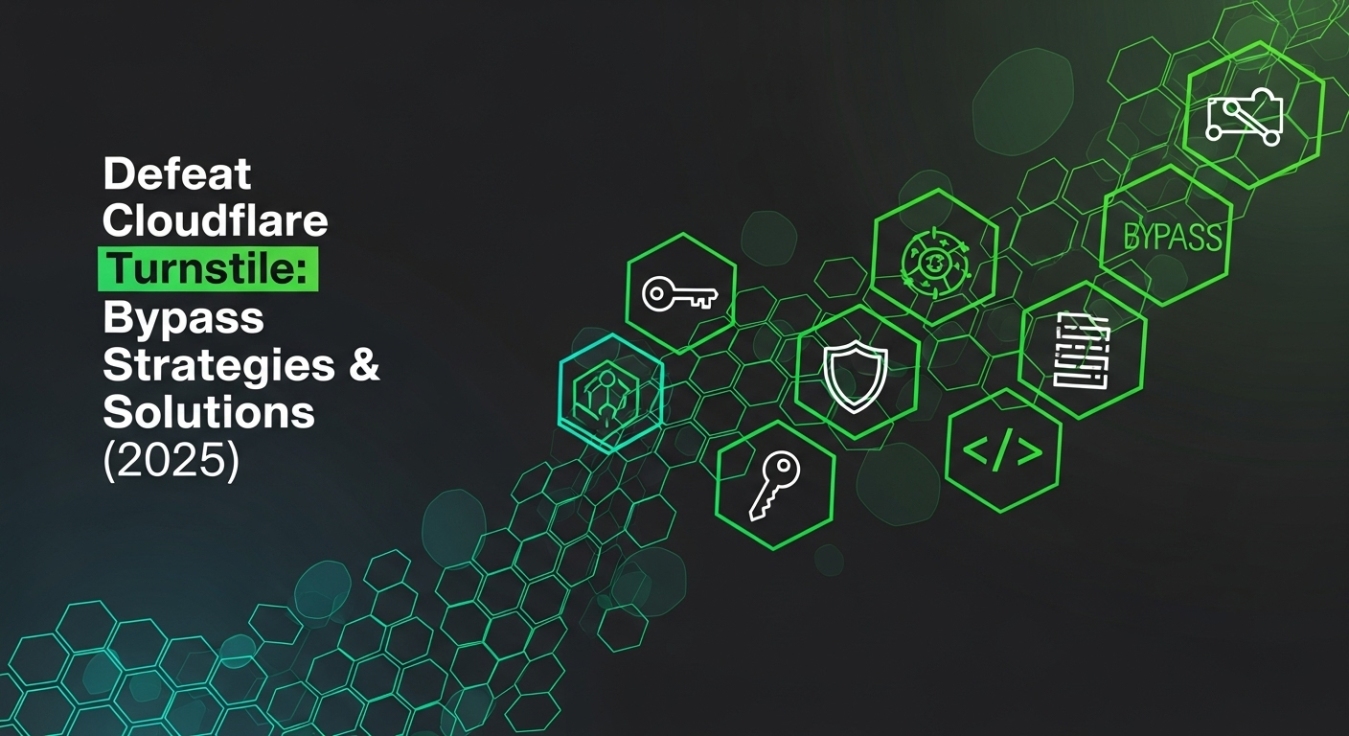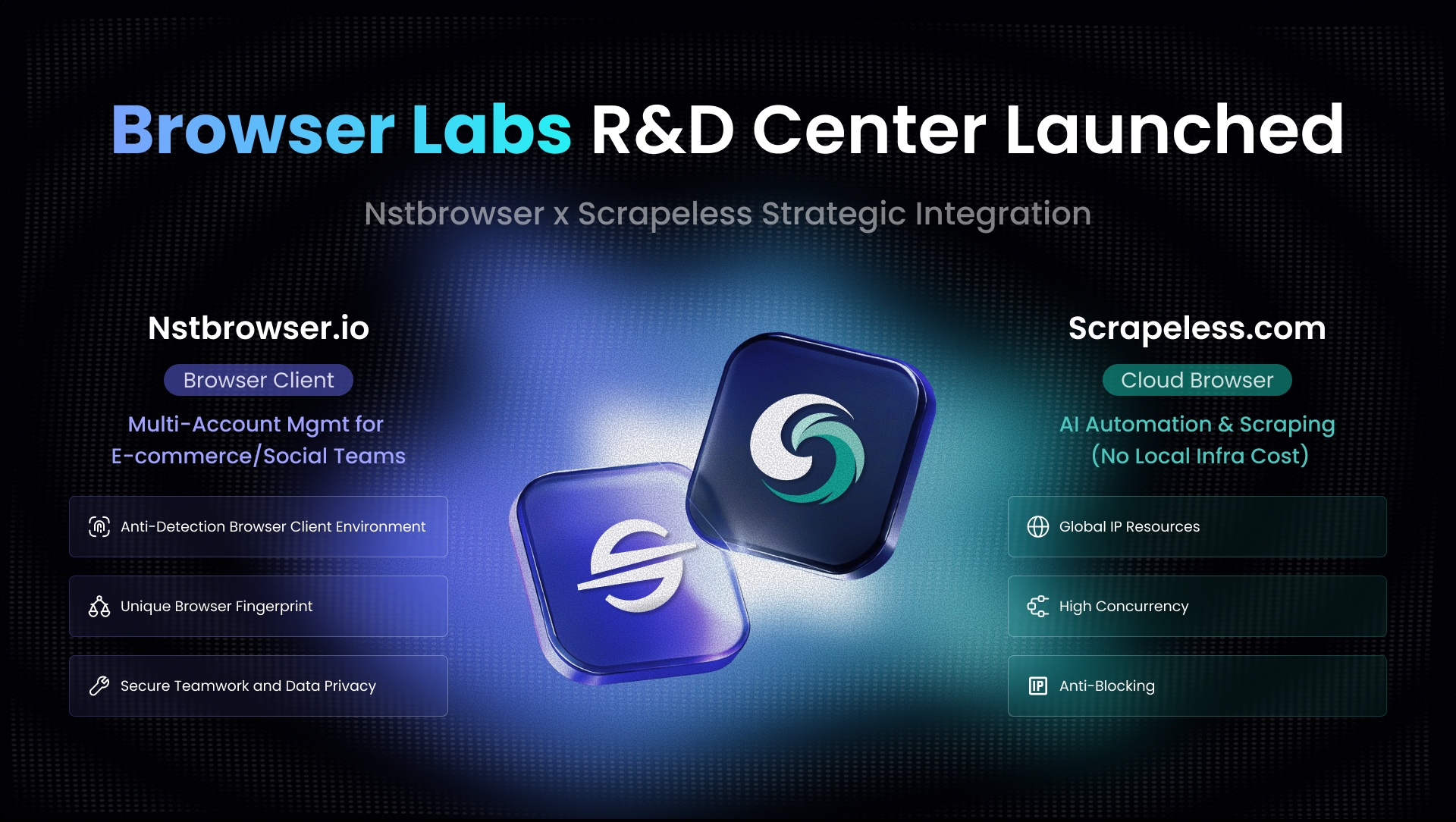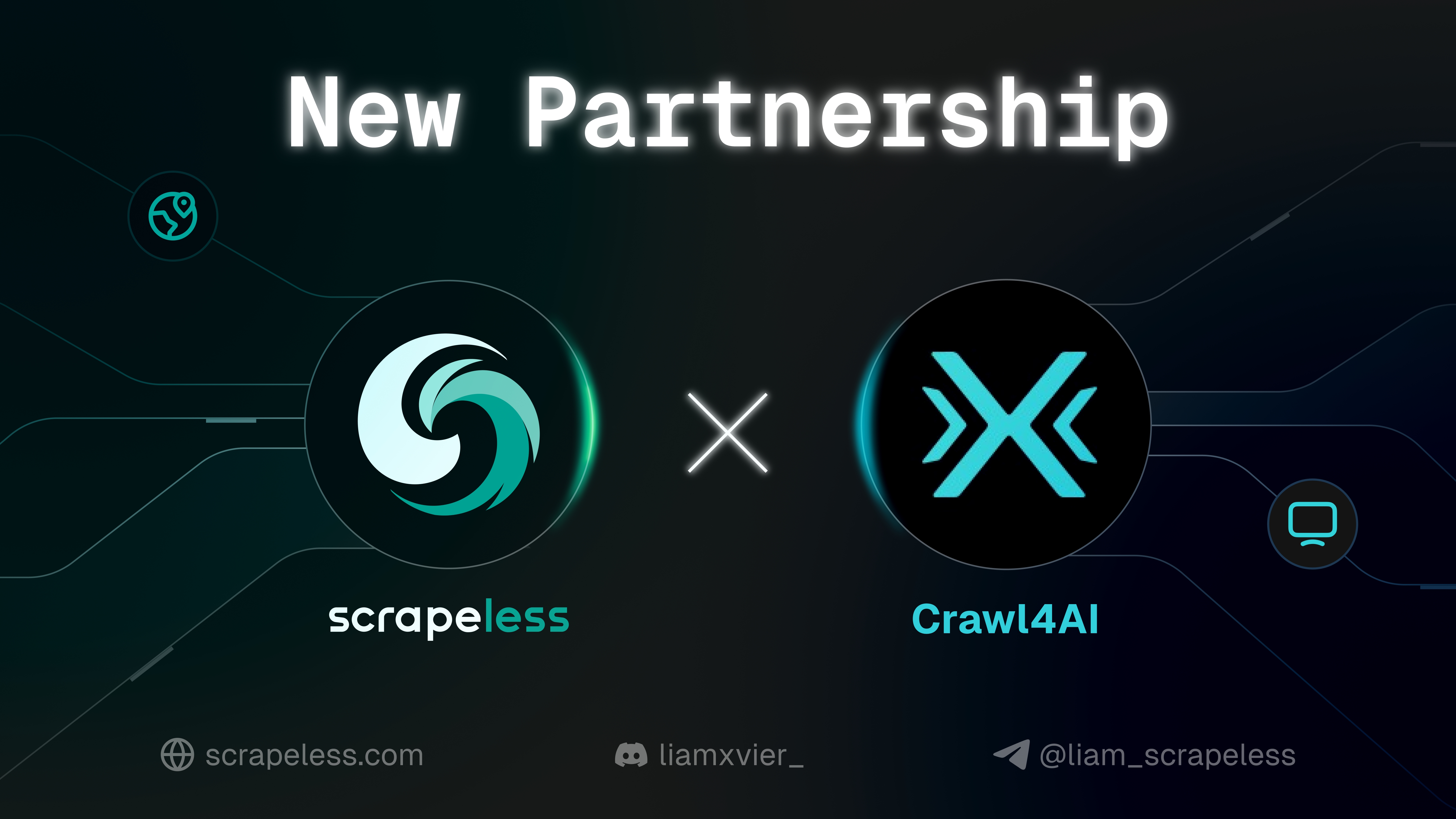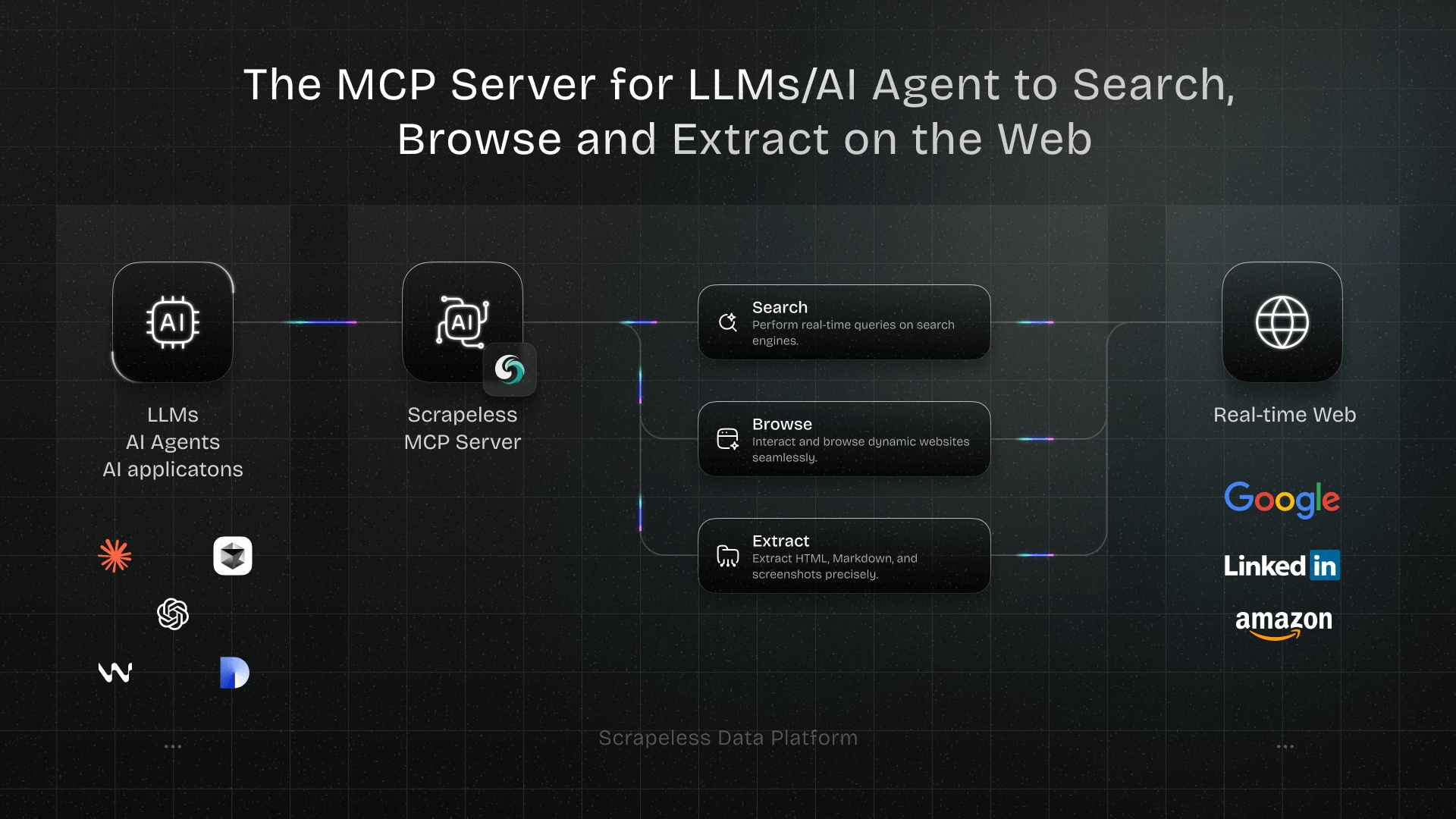Defeat Cloudflare Turnstile
Expert Network Defense Engineer
Key Takeaways:
- Cloudflare Turnstile is an advanced CAPTCHA alternative designed to verify human users without intrusive challenges.
- It uses various client-side signals, behavioral analysis, and machine learning to detect bots.
- Bypassing Turnstile requires sophisticated techniques like headless browsers with stealth, proxy rotation, and specialized CAPTCHA-solving services.
- Manual bypass is resource-intensive; dedicated web scraping APIs like Scrapeless offer an automated, scalable solution.
- Understanding Turnstile's mechanisms is crucial for developing effective bypass strategies.
Introduction
Cloudflare Turnstile is a formidable defense mechanism, protecting websites against bots and malicious traffic without disrupting user experience. Unlike traditional CAPTCHAs, Turnstile operates in the background, leveraging client-side challenges and machine learning to distinguish humans from automated scripts. While beneficial for legitimate users, it poses a significant hurdle for web scrapers and automated tools. This article explores Turnstile's mechanisms, challenges, and effective strategies to defeat it in 2025, highlighting how specialized services like Scrapeless provide an optimized solution.
What Is Cloudflare Turnstile?
Cloudflare Turnstile is a smart CAPTCHA alternative providing a user-friendly and privacy-preserving way to verify human visitors. It confirms web visitors are real and blocks unwanted bots without slowing down web experiences [1]. It achieves this by running a series of non-interactive JavaScript challenges in the background.
How Cloudflare Turnstile Works
Turnstile assesses various signals from a user's browser and device to determine if the visitor is human or a bot. This process is largely invisible to the user. Its core mechanics include:
- Client-Side Challenges: A small JavaScript snippet executes non-interactive challenges like Proof-of-Work Puzzles, Device Space Analysis, and Web API Probes. These are easy for legitimate devices but resource-intensive for bots [2].
- Behavioral Analysis: Machine learning models analyze user behavior patterns (e.g., mouse movements, navigation) to differentiate human behavior from automated scripts. Challenge difficulty adapts based on perceived risk [3].
- Risk Assessment: Turnstile assigns a risk score. High scores lead to blocks or more difficult challenges. Legitimate users typically experience a seamless, fast process.
- Privacy-Centric Design: Turnstile does not use cookies for tracking and collects minimal data, focusing on technical signals. It can also be embedded without sending all traffic through Cloudflare [4].
Why Cloudflare Turnstile is a Challenge for Web Scraping
Turnstile's reliance on client-side JavaScript, behavioral analysis, and evolving machine learning models poses significant challenges for traditional web scraping:
1. Client-Side JavaScript Execution
Turnstile's challenges are executed client-side via JavaScript. Simple HTTP requests cannot execute this, leading to failed page rendering and an inability to pass the challenge.
2. Behavioral and Heuristic Analysis
Turnstile actively monitors user behavior for patterns indicative of automation. Predictable request timings, lack of mouse movements, and consistent browser configurations are easily flagged. Simulating realistic human behavior is complex.
3. Browser Fingerprinting
Turnstile uses browser and device characteristics (User-Agent, plugins, screen resolution, WebGL) to create a unique fingerprint. Generic or inconsistent fingerprints, or those indicating automation (navigator.webdriver), are easily detected.
4. Evolving Detection Mechanisms
Cloudflare continuously updates its anti-bot algorithms. What works today may not work tomorrow, requiring constant adaptation and maintenance for custom bypass solutions.
5. Resource-Intensive Challenges
Proof-of-work challenges, while light for a single human, become resource-intensive for bots making many requests, acting as a deterrent to large-scale operations.
6. Unpredictable Challenge Types
Turnstile challenges are unpredictable and vary in difficulty based on perceived risk, making a static bypass solution ineffective. The system adapts to detected bot behavior.
Strategies to Defeat Cloudflare Turnstile
Bypassing Cloudflare Turnstile requires advanced techniques that mimic legitimate browser behavior and leverage specialized tools.
1. Use Headless Browsers with Stealth Techniques
Headless browsers (Puppeteer, Playwright) are essential for JavaScript-heavy sites. Stealth techniques make them appear human-like [5].
Solution: Use stealth plugins (e.g., puppeteer-extra-plugin-stealth) to modify browser properties and hide automation indicators. Rotate User-Agents and simulate human interactions like mouse movements and random delays.
Code Example (Puppeteer with Stealth):
python
import puppeteer_extra
from puppeteer_extra import stealth
puppeteer_extra.use(stealth.StealthPlugin())
async def bypass_turnstile_puppeteer(url):
browser = await puppeteer_extra.launch(headless=True)
page = await browser.newPage()
await page.goto(url)
await page.wait_for_selector(\'iframe[src*="challenges.cloudflare.com"]\', {\'hidden\': True, \'timeout\': 60000})
content = await page.content()
await browser.close()
return content2. Implement Intelligent Proxy Rotation
Turnstile relies on IP reputation. A single IP or small pool will quickly be blocked. Intelligent proxy rotation is vital [6].
Solution: Prioritize high-quality residential or mobile proxies from a large, diverse pool. Implement dynamic rotation for each request or after a few requests to distribute traffic and avoid rate limits.
Code Example (Conceptual Python with a Proxy Pool):
python
import requests
import random
import time
proxy_pool = [
\'http://user:pass@ip1:port1\',
\'http://user:pass@ip2:port2\',
]
def get_random_proxy():
return random.choice(proxy_pool)
def make_request_with_proxy(url, headers):
proxy = get_random_proxy()
proxies = {
\'http\': proxy,
\'https\': proxy,
}
try:
response = requests.get(url, headers=headers, proxies=proxies, timeout=10)
response.raise_for_status()
return response.text
except requests.exceptions.RequestException as e:
print(f"Request failed with proxy {proxy}: {e}")
return None3. Manage HTTP Headers and User-Agents Dynamically
Inconsistent or generic HTTP headers indicate bot activity. Websites expect a full and realistic set of headers [7].
Solution: Send all standard HTTP headers (Accept, Accept-Encoding, Accept-Language, Referer, Connection). Continuously rotate User-Agent strings from a list of common, up-to-date options, ensuring consistency with other headers.
Code Example (Python Requests with Dynamic Headers):
python
import requests
import random
user_agents = [
\'Mozilla/5.0 (Windows NT 1.0; Win64; x64) AppleWebKit/537.36 (KHTML, like Gecko) Chrome/109.0.0.0 Safari/537.36\',
]
def get_random_headers():
ua = random.choice(user_agents)
headers = {
\'User-Agent\': ua,
\'Accept\': \'text/html,application/xhtml+xml,application/xml;q=0.9,image/webp,*/*;q=0.8\',
\'Accept-Encoding\': \'gzip, deflate, br\',
\'Accept-Language\': \'en-US,en;q=0.9\',
\'Connection\': \'keep-alive\',
\'Upgrade-Insecure-Requests\': \'1\',
}
return headers4. Implement Retries with Exponential Backoff
Aggressive retrying after a block worsens the situation. Use exponential backoff [8].
Solution: If a request fails, wait for progressively longer periods before retrying (e.g., 1s, then 2s, then 4s). Implement robust error handling to trigger this mechanism.
Code Example (Conceptual Python with Exponential Backoff):
python
import time
def fetch_with_retry(url, max_retries=5):
delay = 1
for i in range(max_retries):
try:
response_text = make_request_with_proxy(url, get_random_headers())
if response_text:
return response_text
else:
raise Exception("Empty response")
except Exception as e:
print(f"Attempt {i+1} failed: {e}. Retrying in {delay} seconds...")
time.sleep(delay)
delay *= 2
return None5. Solve Turnstile with Third-Party CAPTCHA Solvers
For visible challenges, integrate with a CAPTCHA solving service [9].
Solution: Services like 2Captcha offer APIs. Your scraper sends CAPTCHA details to the service, which returns a token upon solution. This token is then submitted with your request.
Code Example (Conceptual with a CAPTCHA Solver API):
python
def solve_turnstile_captcha(site_key, page_url):
captcha_token = "your_solved_captcha_token_here"
return captcha_token6. Utilize Web Unlocking APIs (e.g., Scrapeless)
For the most robust and hands-off approach, specialized Web Unlocking APIs handle all anti-bot measures automatically [10].
Solution: These APIs integrate proxy rotation, headless browser stealth, JavaScript rendering, header management, and CAPTCHA solving into a single service. They continuously adapt to new anti-bot techniques, offering high success rates.
Code Example (Conceptual with Scrapeless API):
python
import requests
def scrape_with_scrapeless(target_url, api_key):
scrapeless_api_endpoint = "https://api.scrapeless.com/scrape"
params = {
\'api_key\': api_key,
\'url\': target_url,
\'render_js\': \'true\',
}
try:
response = requests.get(scrapeless_api_endpoint, params=params)
response.raise_for_status()
return response.json().get(\'html\')
except requests.exceptions.RequestException as e:
print(f"Scrapeless API request failed: {e}")
return None7. TLS Fingerprinting Evasion
Cloudflare can analyze the TLS handshake. Tools like curl or requests have distinct TLS fingerprints compared to real browsers [11].
Solution: Use libraries or tools that allow for custom TLS client profiles, mimicking popular browsers. In Python, curl_cffi or httpx with specific configurations can help.
8. Session Management and Cookie Handling
Inconsistent cookie handling can flag a bot [12].
Solution: Use requests.Session() for persistent sessions. Clear session cookies periodically to simulate new users. Ensure cookies are sent and received correctly.
9. Bypass Cloudflare CDN by Calling the Origin
In rare cases, identify the website's original IP and request directly, bypassing all Cloudflare protections [13].
Solution: Use DNS history tools (e.g., SecurityTrails) to find historical DNS records. Subdomain enumeration or email headers might also reveal the origin IP.
10. Leverage Browser Automation Frameworks for Full Control
For highly dynamic sites, full control over browser automation might be necessary to mimic human interaction precisely [14].
Solution: Inject custom JavaScript to interact with elements, trigger events, or modify browser properties. Simulate complex user events and develop adaptive scraping logic.
Code Example (Conceptual Playwright for Advanced Interaction):
python
from playwright.sync_api import sync_playwright
import random
def advanced_playwright_interaction(url):
with sync_playwright() as p:
browser = p.chromium.launch(headless=True)
page = browser.new_page()
page.goto(url)
page.evaluate("""
Object.defineProperty(navigator, \'webdriver\', { get: () => undefined });
""")
page.mouse.move(random.randint(100, 500), random.randint(100, 500))
page.wait_for_timeout(random.randint(500, 2000))
page.wait_for_selector(\'iframe[src*="challenges.cloudflare.com"]\', state=\'hidden\', timeout=60000)
content = page.content()
browser.close()
return contentComparison Summary: Turnstile Bypass Methods
| Method | Effectiveness | Complexity | Maintenance | Cost (relative) | Best For |
|---|---|---|---|---|---|
| Headless Browsers (Stealth) | High | High | Medium | Low to Medium | Dynamic content, moderate anti-bot sites |
| Intelligent Proxy Rotation | High | Medium | High | Medium to High | Large-scale scraping, IP-based blocks |
| Dynamic Headers/User-Agents | Medium | Medium | Medium | Low | Basic anti-bot, mimicking real browsers |
| Exponential Backoff | Medium | Low | Low | Low | Rate limiting, temporary blocks |
| Third-Party CAPTCHA Solvers | High | Medium | Low | Medium to High | Explicit CAPTCHA challenges |
| Web Unlocking APIs (Scrapeless) | Very High | Low | Very Low | Medium to High | All anti-bot, complex sites, high success rate, minimal effort |
| TLS Fingerprinting Evasion | Medium | High | Medium | Low | Advanced anti-bot that inspects TLS handshakes |
| Session/Cookie Management | Medium | Medium | Low | Low | Maintaining state, avoiding session-based blocks |
| Bypass CDN (Origin IP) | Low to Medium | High | High | Low | Very specific, desperate cases (often unreliable/risky) |
| Full Browser Automation Frameworks | Very High | Very High | Very High | Low | Highly customized interactions, complex SPAs (resource-intensive) |
Why Scrapeless is Your Best Alternative
Manually implementing and maintaining Turnstile bypass techniques is resource-intensive and requires constant adaptation. Scrapeless offers a significant advantage by automating these complexities. It integrates a comprehensive suite of features to make your scraping requests appear legitimate and unique, ensuring high success rates without the overhead of manual configuration and maintenance. Scrapeless provides:
- Dynamic Browser Fingerprint Evasion: Alters and randomizes browser characteristics with each request.
- Intelligent Proxy Rotation: Manages a vast pool of high-quality residential and mobile proxies.
- Full JavaScript Rendering with Stealth: Executes client-side code like a real browser, with stealth techniques.
- Automated CAPTCHA Solving: Integrates CAPTCHA solving for uninterrupted processes.
- Human-like Behavior Simulation: Simulates natural browsing patterns and random delays.
- Continuous Adaptation: Continuously updated to counter new anti-bot techniques.
By leveraging Scrapeless, you offload the burden of managing complex anti-detection infrastructure, allowing you to focus on extracting valuable data and insights. It provides a robust and future-proof solution against Cloudflare Turnstile and other advanced anti-bot technologies.
Conclusion and Call to Action
Cloudflare Turnstile is a sophisticated defense, posing challenges for web scrapers. Successfully defeating it requires a strategic combination of advanced techniques. While manual implementation is possible, the continuous evolution of anti-bot technologies makes it resource-intensive. Specialized Web Scraping APIs like Scrapeless offer a powerful, efficient, and automated solution, integrating fingerprint evasion, proxy rotation, JavaScript rendering, and behavioral simulation.
Ready to overcome Cloudflare Turnstile and enhance your web scraping success?
Discover how Scrapeless can simplify your data extraction process and provide robust defense against advanced tracking techniques. Visit our website to learn more and start your free trial today!
Start Your Free Trial with Scrapeless Now!
Frequently Asked Questions (FAQ)
Q1: What is the main difference between Cloudflare Turnstile and traditional CAPTCHAs?
Cloudflare Turnstile is a smart CAPTCHA alternative that primarily operates in the background, using non-interactive challenges and behavioral analysis to verify human users. Unlike traditional CAPTCHAs, it rarely requires users to solve puzzles, aiming for a seamless user experience while still blocking bots.
Q2: Can I bypass Turnstile using just a simple HTTP request library like Python's requests?
No, simple HTTP request libraries cannot bypass Turnstile. Turnstile relies heavily on client-side JavaScript execution and browser-like environments to run its challenges. You need tools that can render JavaScript, such as headless browsers or specialized web scraping APIs.
Q3: Is it legal to bypass Cloudflare Turnstile for web scraping?
The legality of bypassing Cloudflare Turnstile for web scraping depends on several factors, including the website's terms of service, the type of data being scraped, and jurisdiction. While accessing publicly available information is generally not illegal, bypassing security measures can be a gray area. Always consult legal advice for specific use cases.
Q4: How often does Cloudflare update Turnstile's detection mechanisms?
Cloudflare continuously updates its anti-bot algorithms and machine learning models to adapt to new bypass techniques. This means that any custom bypass solution requires ongoing maintenance and adaptation to remain effective.
Q5: Why is a Web Unlocking API like Scrapeless considered a better alternative for bypassing Turnstile?
Web Unlocking APIs like Scrapeless are designed to handle all aspects of anti-detection automatically. They integrate advanced techniques such as dynamic browser fingerprint evasion, intelligent proxy rotation, full JavaScript rendering with stealth, and automated CAPTCHA solving. This offloads the significant development and maintenance burden from users, providing a more reliable and scalable solution for defeating Turnstile and other anti-bot measures.
At Scrapeless, we only access publicly available data while strictly complying with applicable laws, regulations, and website privacy policies. The content in this blog is for demonstration purposes only and does not involve any illegal or infringing activities. We make no guarantees and disclaim all liability for the use of information from this blog or third-party links. Before engaging in any scraping activities, consult your legal advisor and review the target website's terms of service or obtain the necessary permissions.



